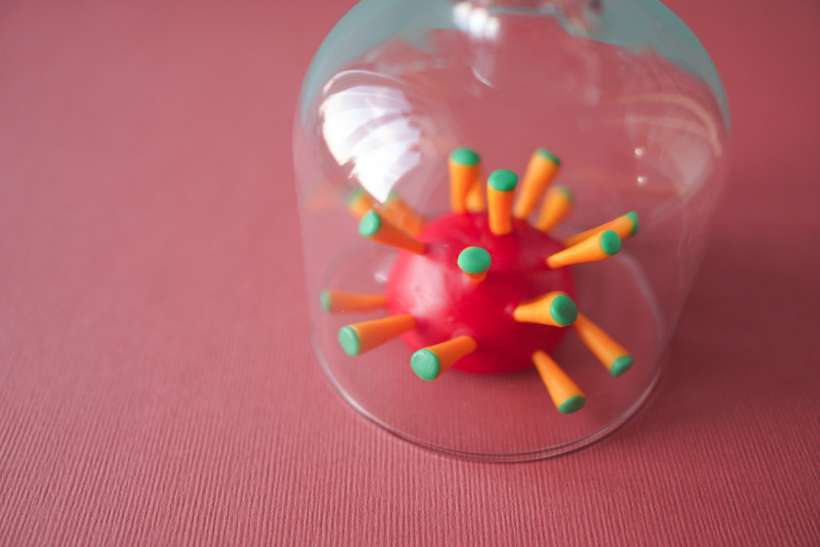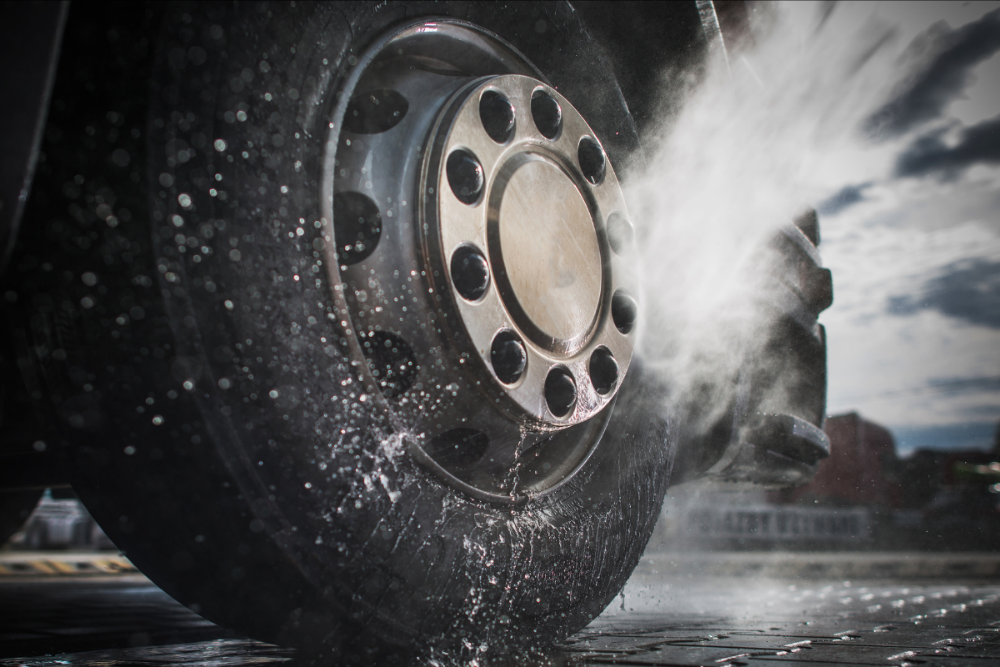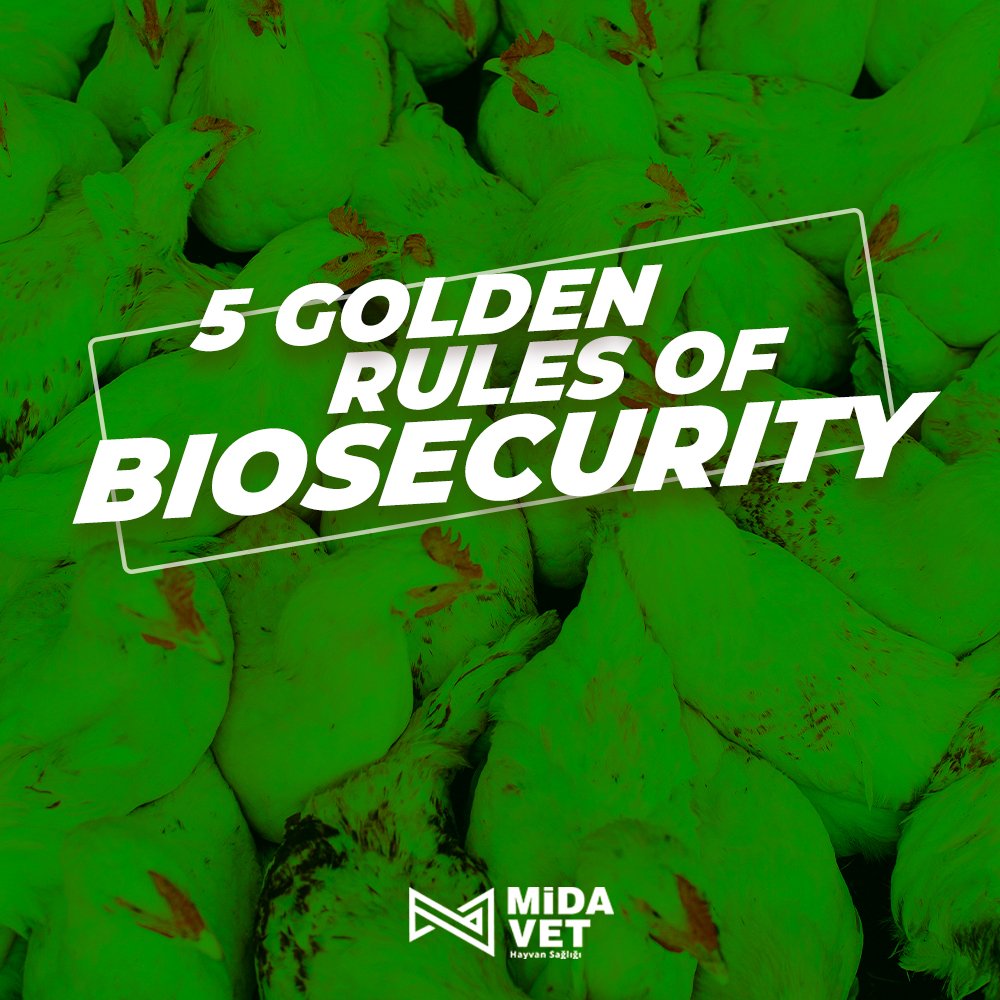In animal production, biosecurity is an important part of animal welfare, as well as the basis of safe food supply and sustainable and profitable production. A working biosecurity ecosystem can be achieved by establishing biosecurity programs for each link of the production chain, implementing them in accordance with their principles, ensuring regular control and making regular records.
Regardless of its location and purpose, the 5 basic elements that make up a biosecurity program are: isolation, traffic control, sanitation and disinfection, monitoring and risk analysis.
Isolation
It means confining the facility in a controlled environment that excludes disease vectors. Pathogens must be assumed to be mechanically transmitted by anything that can walk, crawl, or fly from farm to farm.
1. Keep a pair of boots worn only in that facility in each business. Wear the same boots every time you enter. Leave them inside the facility at every exit. Clean and disinfect at regular intervals.
2. Eliminate shelter and food for potential carriers and clear vegetation around the holding.
3. Create a vector control program for insect, mammal, and bird vectors. These vectors are important because they can mechanically move infected droppings from one barn, house, or facility to another.
4. Improve barriers to prevent wild birds from accessing poultry barns.
5. Create an insect control program.
6. Rodents have always played an important role in the transmission of diseases. Rodent control and prevention of traffic between buildings is essential.
7. Prevent stagnant water from accumulating. The water is a major draw for migratory waterfowl and shorebirds that have been involved in the outbreaks. Birds can mechanically transmit many bacteria and viruses, but waterfowl are important because they can introduce disease to a previously uninfected flock and start a rapidly spreading infection.
9. Educate your staff about the dangers of live bird markets and keep their own poultry or parrots, budgies, etc. advise that they do not breed birds for any purpose. Also advise them not to visit live bird markets or other poultry houses where they could come into contact with your flock.
10. Avoid dead wild birds. Those found on your premises should be handled as if they were highly contagious. Handle them with gloves, put them in a plastic bag, seal them and dispose of them preferably by incineration.
Control of traffic
This header includes both traffic to your farm, traffic inside your farm, and traffic leaving your farm.

1. The spread of diseases follows the movement of people and traffic.
2. Be a good neighbor. If you suspect an epidemic disease, start a self-quarantine.
3. Record visitors to your premises. Visit logs can provide useful information for monitoring a disease outbreak.
4. Keep human traffic from farm to farm to a minimum. Contact by phone if possible.
5. Find out where someone is before you invite them to your workplace.
6. Do not make unnecessary visits to other farms.
7. Do not let truck drivers, mechanics or delivery personnel get off your premises without clean shoe covers and overalls.
9. Require workers and crews to wear freshly laundered clothing or farm-sourced clothing each day. Do not allow people working in other poultry businesses to enter your facilities.
10. Infected carcasses can be dangerous. Dispose of dead animals as soon as possible.
Sanitation and disinfection
It is intended for the disinfection of materials, people and equipment entering the farm and the cleaning of the personnel in the farm. Consult only the experts in the subject to choose the product that best suits your usage needs.
Remember that organic matter greatly increases the resistance of pathogens to disinfection.
1. Make sure that the tools of the service personnel are hygienic. Wash and disinfect the tires and wheel wells of all vehicles arriving at your facility. Alternatively, vehicles can be parked outside the farm perimeter. Service attendants can then walk to the farm wearing overshoes.
2. Wash and disinfect equipment transferred from building to building or from business to business.
3. Apply an effective cleaning and disinfection protocol during and between semesters.

4. Reinforce measures in cases of epidemic danger. Intensify your cleaning and disinfection routine.
5. Put all samples to be taken to the laboratory in plastic bags. Disinfect the interior and exterior of all vehicles returning from the lab, including floor mats. Do not allow laboratory personnel to return to your facility without taking a shower and changing clothes.
6. Do not allow vehicles in areas heavily contaminated with manure.
Monitoring
In order to objectively monitor and record the operability of the measures taken at critical control points, it is necessary to turn them into rational data. For this purpose;
1. Create checklists (yes/no) to determine the appropriateness of measures that cannot be measured, such as isolation and traffic control.
2. Check compliance with visual observations and laboratory data for sanitation applications, and laboratory data for disinfection.
3. Make a detailed note of your feeding and consumption performances on a per station basis to check the effectiveness of your rodent control practices.
4. Follow methods that allow you to count against pests being tackled.

Risk analysis
Correct analysis of risk is the first condition of taking appropriate precautions and requires having sufficient technical equipment.
Each business is based on geographic location, business structural conditions, distance to neighboring businesses and roads, etc. unique due to factors. For this reason, it may be necessary to make extra biosafety regulations, provided that the rules accepted as international standards are kept constant.
Interpretation of the obtained biosafety data is also an important part of the risk analysis and will enable the development of the biosecurity measures taken and a more inclusive program.
